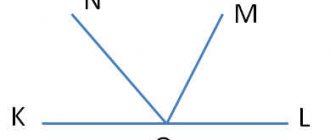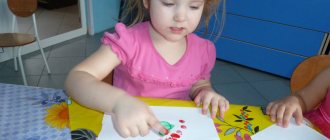Did you know?
Did you know that the first detailed work on the properties and methods of using a magnet, which dealt with a magnetic stone and gave instructions on how to find its poles and magnetize an iron needle with it, was a handwritten treatise that appeared in France in 1269, “The Epistle of Magnet Pierre de Maricourt, nicknamed Peregrina, to the knight Siger de Foucaucourt." ... Gilbert also suggested that in nature there should be “magnetic charges” - northern and southern. These views were developed by Coulomb, who established the law of interaction of such “charges”, which exactly coincides with the known law for electric charges. And only Ampere, having explained all magnetic phenomena with the help of elementary electric currents, made the hypothesis of special magnetic charges unnecessary. ... any rotating body, including planets, should have a slight magnetization. Attempts to discover it were made by the outstanding Russian physicist P. N. Lebedev. Subsequently, using more advanced equipment, this phenomenon was confirmed; in particular, the magnetization of the rod was measured when it rotated around the longitudinal axis. ... the total magnetic permeability of the alloy of diamagnetic gold and paramagnetic platinum drops by two orders of magnitude compared to conventional non-ferromagnetic substances. ... unlike paramagnetic and diamagnetic materials, the magnetic permeability of ferromagnetic substances is determined by the intensity of the external magnetic field. Thus, the magnetic permeability of iron in weak fields can reach values of several thousand units, and in strong fields its values decrease to hundreds of units and lower. At temperatures above the so-called Curie point (for iron it is 767 °C), all ferromagnets become paramagnetic. ... some alloys of paramagnetic and diamagnetic metals, for example, the so-called Heusler alloy of copper, manganese and aluminum, are almost as good as iron in their magnetic properties. Now fully “workable” magnets have been obtained from... organic materials. ... magnets made from compounds of samarium and cobalt have enormous lifting force. A magnetic magnet in the form of a small ball is capable of holding a load hundreds of times greater in mass than the ball itself. ... a not very strong magnetic field in which the superconductor is placed is displaced from its thickness, and a sufficiently strong magnetic field destroys the superconducting state. This effect can be used to create logical memory elements in computers based on superconductors. ... thanks to new discoveries in magnetism, the production of memory devices with super-dense recording of information becomes feasible, when an area the size of a thumbnail (a favorite comparison of American computer scientists) will accommodate tens of thousands of copies of Homer's Odyssey. ... in superstrong magnetic fields, for example on the surface of neutron stars, atoms of matter form polymer chains aligned along the field lines. They are so strong that even at temperatures of millions of degrees the substance remains in a crystalline state. In such fields, a dielectric can become a metal and vice versa. Source: Kvant magazine
Want to know more? "Did you know"
Russian language and literature
Lesson objectives:
Consolidation of knowledge in phonetics, graphics, spelling, spelling. Introduction to the textbook.
Tasks:
- Creating conditions for showing interest in the topic of the lesson.
- Ensuring the research nature of educational activities: observation, comparison, generalization.
- Enriching students' vocabulary, practicing spelling.
Equipment:
textbook “Russian language. 9th grade” / Barkhudarov S.G., Kryuchkov S.E., cards, student workbooks, table of sounds and letters of the Russian language, chalk, blackboard.
During the classes
Hello guys. Glad to see everyone in class. Let's review the material covered earlier and learn something new.
We will study according to the textbook of Stepan Grigorievich Barkhudarov. Let's look at it. The title page indicates the name of the textbook, its purpose, publisher, and year of publication. On page 3 you will see a legend that will help you find out more information. Pay attention to the second designation. The material highlighted in the text of the paragraph in this way must be memorized. Let's remember the numbers corresponding to different types of analysis. You will find debrief plans in the appendix on pp. 238-245. On pages 246 and 249 you will see a list of punctuation and spelling rules that you have studied previously and will study in grade 9 and which are necessary for testing in the OGE format. On pp. 250-251 - a spelling dictionary, followed by a spelling dictionary, on p. 254 - the content of the Russian language course in 9th grade.
1. Formulating the topic of the lesson. (Self-determination for activity)
Let's read a poem (written on the board)
Love
- That was the day! It's arrived
- so many people come to us at once.
- They brought with them some
- complete strangers. Previously I
- I couldn’t ask anything about them.
- The worst thing they said
- in languages completely incomprehensible.
- And I smiled listening to them
- strange speeches. The talk of some
- sounded like mountain screams
- orlov. Others hissed like snakes.
- Sometimes I recognized the wolf's barking.
- The speeches sparkled like metal. Words
- became menacing. In them
- Mountain stones rumbled.
- Hail poured into them.
- A waterfall roared through them.
- And I smiled. How could I
- know the meaning of their speech? They,
- maybe in your own language
- repeated our sweet word
- "Love"?
N. Roerich, 1920
We will answer the questions:
- 1. What did the lyrical hero perceive, and what was beyond his understanding? (the hero perceived the sounds, but did not understand the meaning of what was said)
- 2. What associations of sounding speech did the lyrical hero have? (“the talk of some” resembled the screeching of an eagle, of others he heard the hiss of a snake, sometimes he heard barking, the speeches “sparkled with metal”, “stones rumbled” in them, “a waterfall rustled”, “hail poured down”)
- 3. Why did the lyrical hero assume that the people who came to him pronounced the word “love”?
- 4. The words “sound”, “talk”, “language”, “speech” are found in the poem. Name the branch of the science of language in the definition of which the indicated words are or are implied. Phonetics is a branch of the science of language that studies speech sounds, their formation and properties. Today we will talk about phonetics, graphics and spelling. Let's write down the topic of the lesson.
2. Updating knowledge. Let's remember the terminology (work in pairs):
- 1. What is the smallest unit of language?
- 2. What groups are speech sounds divided into?
- 3. What is the difference between a letter and a sound?
- 4. How many letters are in the Russian alphabet?
- 5. When do the vowels E, Yo, Yu, Ya designate 2 sounds?
- 6. Give examples of the designation of 2 sounds with the letters E, E, Yu, Ya. (words are written on the board)
- 7. What are the functions of b and b?
- 8. Give examples of the role of b and b in language. (words written on the board)
- 9. How many sounds [t] and [d] are there in the highlighted sentences? (words written on the board)
Pay attention to the examples and the answer in the last task. What conclusion can be drawn by looking at them? (Speech sounds are not always recorded as they are spoken)
3. Localization of difficulties.
As proof, consider the following tasks and complete them. (Work in groups in rows)
Ex. 1 (1 row)
A transcription of words that have two spellings is given. Write these words in letters. What are such words called in lexicology? (homonyms)
- [sad't']
- [sy'est]
- [pr'idal]
- [abv'ival]
- [shafts]
- [development]
Ex. 2 (2nd row)
Write a transcription of the words “happiness”, “feeling”, “save”, “rain”. Make a phonetic analysis of the word “save”.
Ex. 3 (3rd row)
Form new words by reading the sounds of these words in reverse order:
flax, bream, mascara, paradise, aphid, spruce, bargain, hatch.
Having solved the proposed phonetic problems, we noticed that words are sometimes written as they are heard, for example, “paradise”, “house”, “stake”, etc. And in most cases, morphemes common to words with the same root retain a single style in writing, for example, water - water. This observation confirms that the basic principle of Russian orthography is morphological. However, there are also phonetic and historical principles. Let's look at examples:
4. Completing a task aimed at repeating the material covered with the involvement of new information. Ex. 9 (p. 8) Replace phrases with the connection management with synonymous phrases with the connection agreement. (remember SS schemes)
- Control: verb/noun + noun/noun with preposition, pronoun.
- Agreement: noun/place + adjective, pronoun, participle, order. numbers
- A joke without malice is a good-natured joke
- a night without sleep - a sleepless night
- an act without honor is a dishonorable act
- family without children - childless family
- society without classes - classless society
- a film without a plot - a plotless film
- work without interruptions - uninterrupted work
- a figure without form - a formless figure
- an act without selfishness is a selfless act.
Underline the prepositions, highlight the prefixes (in the second phrase). What principles of Russian spelling did we use when completing this task? What determines the spelling of prepositions and prefixes in Z/S?
In the Russian language there is another rule when we use the phonetic principle when writing a word. This is the spelling of the vowels Y and I after prefixes.
- summarize
- pre-July
- collect
- inter-institutional
- counter-play, sub-inspector, Transjordanian, post-industrial
- pedagogical institute, sports equipment
Let's try to note the patterns in the examples.
1. When do I write the vowel I after the prefix, and when do I write Y?
Let's read the theoretical material on page 9
Let's do exercise 4:
Insert the missing letters: Sub...total, medical...institute, previous...future, without...action, dis...infection, super...interesting, without...inventory, super...gra, inter...editor's, pre...infarction, from...skat.
Highlight the prefixes, underline Y or I.
Reflection. Today we repeated some terms, rules, principles. Let's remember what principles underlie Russian spelling?
When do we write I, and when do we write Y after prefixes?
Homework. Repeat what orthoepy is. Complete exercise 12+ words from the boxes (pp. 8, 9). Learn the stress in words. Prepare for independent work.
References:
- 1.Textbook. Russian language 9th grade. S.G.Barkhudarov, S.E.Kryuchkov, Moscow, “Enlightenment, 2019
- 2. Lesson developments in the Russian language. 9th grade. Methods of preparing for the written exam in the Russian language for a basic school course. N.V. Egorova
- 3. Russian language: collection of rules and exercises / D.E. Rosenthal. – Moscow: Eksmo, 2020.
- 4. Presentation “Phonetics” by Pechkazova S.P., teacher of Russian language and literature of the MBOU “Lyceum No. 1”, Chamzinka, Republic of Mordovia.
- Updated: August 2, 2020
- Author: Mironova Marina Viktorovna
Physics - lessons, tests, presentations, notes
Create your teacher website PC and PPC courses Video lessons Olympiad Webinars for teachers
- home
- Physics
Watch and download free lessons, tests, notes, presentations and other useful materials on physics for teachers and students.
- All 8716
- Lessons 4118
- Presentations 1765
- Tests 433
- Planning 753
- Events 579
- Other 1068
- All classes
- For preschoolers
- 1 class
- 2nd grade
- 3rd grade
- 4th grade
- 5th grade
- 6th grade
- 7th grade
- 8th grade
- 9th grade
- Grade 10
- Grade 11
| Topic: “Edible and inedible mushrooms, Rules for collecting mushrooms” Lesson notes for children of the older group. This lesson allows you to learn to distinguish edible from inedible, reminds you of the rules of behavior in the forest... 06.16.2020 Vasilyeva Galina Vyacheslavovna 80 0 |
| Didactic material on physics “Domino” Using domino cards you can quickly check previously studied material. This will be unusual and interesting for the guys, since for every question you need to find a card with the correct answer... 09.30.2020 Zaitseva Yulia Andreevna 14 0 |
| Mechanical vibrations In this lesson you will learn: What are oscillatory movements. What is an oscillator... 08/14/2020 Maria Vladimirovna Pron 58 0 |
| Lived Molsheri. Deneni kyzdyruga kazhetti nemes ol suyganda beriletin zhylu molsherin esepteu. Plug some of the drains from the drains of the old water supply. 10/07/2020 Begimbaeva Zhumagul Kupzhasarovna 13 0 |
| Work program Development of a work program for the “Fascinating Physics” club… 09.25.2020 Agafonova Svetlana Ivanovna 28 1 |
| §7. Zhylu Molsheri. Shutting down the menshikti zhylu syyimdylygy &nb... 10/05/2020 Kozhakhmetova Kulzhanat Duysemkhanovna 11 0 |
| The use of ICT in physics lessons in grades 7-8 The use of modern information technologies in physics lessons in grades 7-8 can significantly improve the quality of education, children’s interest in learning, cooperation… 08/22/2020 Melnikova Elena Vladimirovna 49 0 |
| Independent work in physics “Calculation of work and power of electric current” Independent work in physics in 8th grade Topic: Calculation of work and power of electric current…. 08/22/2020 Melnikova Elena Vladimirovna 34 0 |
| School scientific conference for students in grades 9-11 “From Alexander Popov’s radio receiver to the modern GLONASS system of Russia” The school scientific conference was dedicated to the days of Russian science and considered the development of both mechanical and radio wave communications. Such once popular types of communication as... 05/11/2020 Nikulnikov Valery Dmitrievich 100 1 |
| Analysis of the effectiveness of assessment tools for knowledge, skills and mastered competencies in physics lessons. Speech at the methodological commission of the natural science cycle... 05/14/2020 Popova Anna Vladimirovna 77 0 |
| Implementation of problem-based and developmental learning in physics lessons in order to enhance the cognitive activity of students. The deepest and most lasting knowledge is that obtained in the process of mental labor. ... 08/20/2020 Kanaicheva Maria Viktorovna 41 0 |
| Home experimental assignments with crystals are the basis for students’ creative research in physics and chemistry. The article discusses the possibilities of using home experimental assignments in physics to grow crystals…. 08/07/2020 Gadysheva Nadezhda Sergeevna 45 0 |
| Home experimental assignments as a means of increasing the cognitive activity of students when studying physics 10/03/2020 Torgonsky Yuri Alexandrovich 15 0 |
Bohr postlattars. Sutegi tektes atom ushin boron theories. Frank-Hertz tazhiribesi. Bohr postlattars. Sutegi tektes atom ushin boron theories. Frank-Hertz also... 04/21/2020 Takenova Inkar Tolegenovna 85 0 |
| Designing an educational process based on the “flipped learning” model Lesson model based on the “flipped” learning type, on the topic “Impulse. Solving problems on the law of conservation of momentum"… 06/03/2020 Grigorieva Natalya Nikolaevna 91 0 |
| Final lesson on the topic: “Production, transmission and use of electrical energy” At the last final lesson, students are offered a task in which they must, in this section, find the basic concepts that they learned in this chapter…. 06/08/2020 Emelyanenko Tatyana Sergeevna 66 0 |
| Current methodology for solving problems on the laws of conservation during the collision of bodies; a method for solving problems on the application of the law of conservation of momentum and energy, during inelastic and elastic impact of bodies…. 09/02/2020 Janitor Petr Stepanovich 33 0 |
| Independent work on physics “Power” Independent work on physics in 7th grade Topic “Power”… 08/22/2020 Melnikova Elena Vladimirovna 40 0 |
| Research work of a 10th grade student on the topic “Visible Sound” The goals of the work are to create an acoustic indicator in the form of a complete portable device; 03/12/2020 Manachinskaya Lyudmila Aleksandrovna 97 1 |
| Presentation on physics in 7th grade on the topic “Mechanical work” The presentation lesson is very interesting for students... 08/27/2020 Tepikina Larisa Fedorovna 35 0 |
- ← Back
- Continue →



